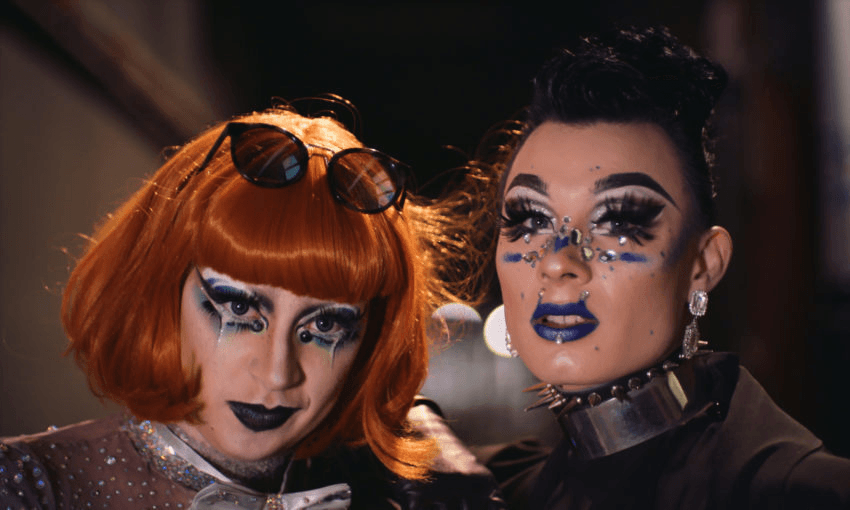In the latest Frame documentary for the Spinoff, produced by Wrestler and funded by NZ on Air, we meet the people who have made drag such a big part of Wellington’s popular culture.
Wellington is one of the most accepting parts of the country to do drag, according to 21-year-old Monique Walford. “I feel like in the current Wellington scene drag is almost another one of those things that hipsters are doing. Like, some of them are doing poetry, some are doing art and a lot of them are doing drag right now.”
“While people have been doing drag in Wellington since long before we were born, the scene has exploded in recent years and we have our drag ancestors to thank for making it possible for us to exist in the way we do now,” says Walford.
Once found only on the fringes, drag is very much having its moment back in the spotlight. Thanks to TV shows like RuPaul’s Drag Race and TVNZ’s House of Drag, drag is now more popular than ever and is thriving throughout New Zealand.
“The demand for drag is growing more and more with every Pride Fest and the more reality shows get put on television,” says Walford. “As questionable as some of the things RuPaul says [are], he has done a lot to get drag into the mainstream and I feel like in the eyes of a mainstream audience queerness is ‘cool’ now.”
Capital Royalty, directed by Conor Lui and Emma Martin
Walford has two drag identities; drag king Robin YaBlind and hyperqueen Altra Violet. They are one member of the performance collective Haus of Sin, along with 20-year-old Bjorn Aslund – known on stage as drag queen Angel Ace. “We do group performances together and kind of inspire each other to keep pushing and be better performers,” says Aslund.
Both Walford and Aslund hail from small towns on the North Island and only discovered drag after moving to Wellington after high school. “Wellington is pretty forward in comparison to the rest of New Zealand. There are are a relatively large amount of drag kings and gender non-conforming drag artists which struggle to get as much publicity in other areas,” says Aslund.
Wellington’s Ivy Bar is where the contemporary drag scene was born and grown in the capital and continues to live. “It’s the hub of queer life and drag,” says Walford. “Drag has been flourishing in Wellington since long before we were born, and we have all those that came before us to thank for the ability to do drag the way we do today.”
Both relish the creative expression drag offers and despite their youth, are conscious of the platform it offers them as queer men and women.
“Drag is a fantastic medium to push society towards acceptance,” says Aslund. “Drag performers are often prominent in the community because they stand out. They often have influence and can act as protectors for people in the queer community with less of a voice.”
Walford agrees. “Society needs to progress and as drag performers, we are one of the most visible things the queer community has. At the end of the day, If I can put a freakin’ wig on and kids realise it’s ok to be queer? I can’t think of anything more valid.”
Both Walford and Aslund see a future in drag performance and want to take their art as far and wide as possible. “I don’t know any place that wouldn’t benefit from the queer community having another beacon to really look up to. Somewhere we can integrate into society better,” says Walford. “Drag can go further in terms of gender expression, and will go further, and I’m happy to be at the front of that.”
View more in the Frame series here.

